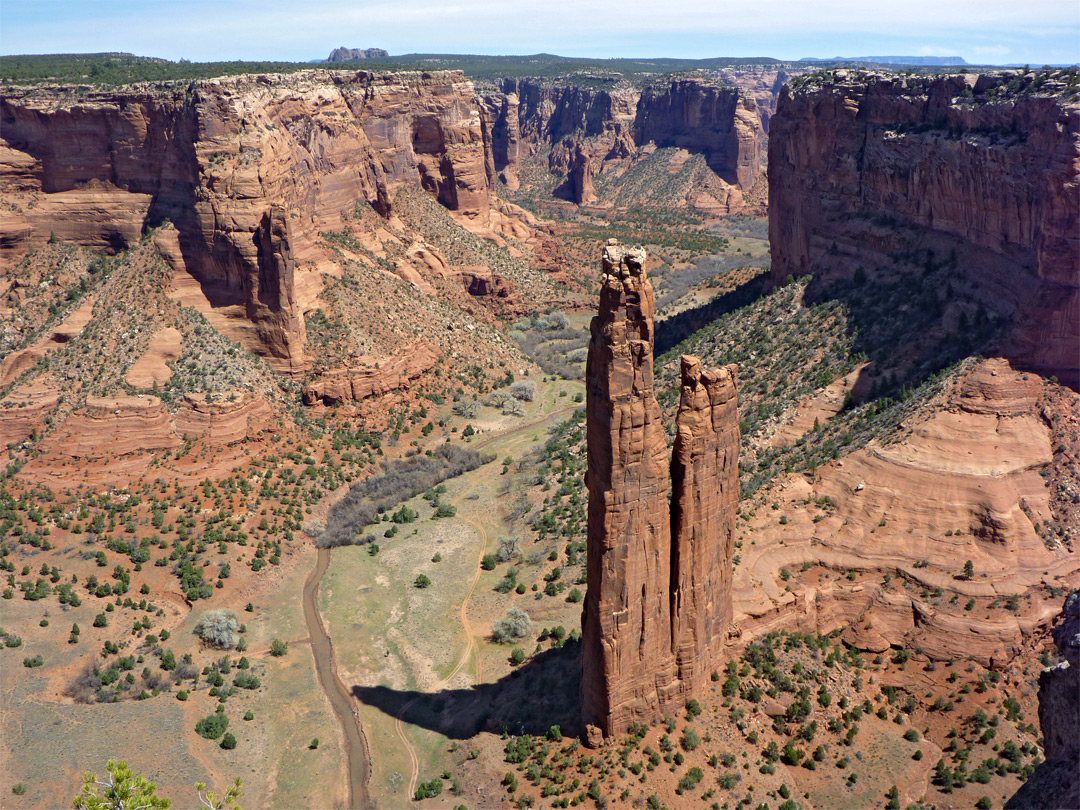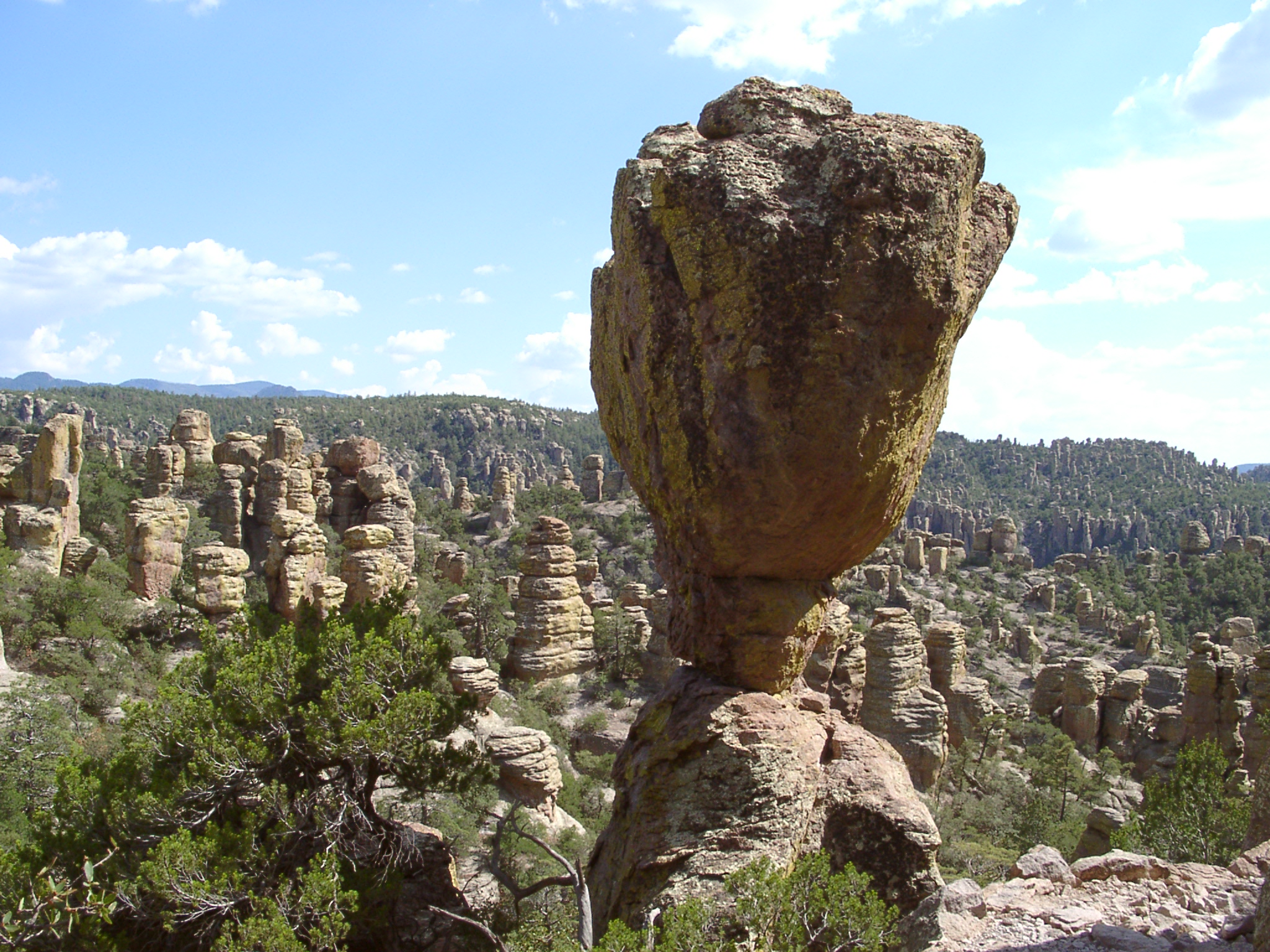...all of these National Parks were first established as National Monuments (or other Units run by the National Park Service, Cuyahoga Valley started as a National Recreation Area and Theodore Roosevelt started as a National Memorial). That's quite a list. Just over half of our National Parks were first designated as other units of the NPS.
A few weeks ago, another NPS unit was "promoted" to the ranks of our National Parks. In early 2018, Congress authorized re-designation of Jefferson National Expansion Memorial to Gateway Arch National Park, the 60th National Park. In downtown St. Louis, the Park preserves the Gateway Arch, some of St. Louis's oldest buildings (including the Courthouse where the Dred Scott case originated), and the Museum of Westward Expansion. Tara and I are pleasantly surprised that we get to add this place to complete our goal of visiting all the National Parks.
So what's in a name? What's the difference between a National Park and a National Monument/other NPS units? It's more than just a name. On paper, National Parks are selected for their scenic, inspirational, educational, and recreational value. National Monuments are selected for their historical, cultural, and scientific interest, so it protects a variety of different things, such as wilderness areas, historical battlefields, ancient ruins, military forts and other historical buldings, etc. Now obviously these different interests intersect and overlap, but one of the main differences between the two is the bureaucratic process in how they are created. Congress authorizes the creation of a National Park under the "Property Clause" Article IV, Section 3 of the Constitution (subject to President's veto of course), while a National Monument is created by executive order of the President (thanks to Theodore Roosevelt's creative interpretation of the 1906 Antiquities Act). Furthermore, a National Park is afforded more protection from human activity/commercial development, etc. than a National Monument.
Because of all this interplay, unfortunately politics is always involved when it comes to our National Parks. There is certainly a lot of bipartisan support for the most part, but our National Parks are no stranger to controversy. I don't want this blog to get too involved in politics so if you'd like to read about some of this, you can google it. I would suggest reading about the creation of Grand Teton National Park and the controversy surrounding local ranchers and Jackson Hole National Monument in the 1940s (Congressional consent is now required to create (or expand) any National Monument in the State of Wyoming). Or you can read about Jimmy Carter's creation of several National Monuments in Alaska in the late 1970s and the subsequent backlash that lead to certain limitations on the Antiquities Act that specifically apply to Alaska (see the Alaska National Interest Lands Conservation Act, essentially it requires Congressional authorization to create a monument in Alaska if its more than 5,000 acres). And, of course, the current news of Trump's review of all National Monuments created after 1996 (overseen by Secretary of the Interior Ryan Zinke) and the reduction of Bears Ears National Monument and Grand Staircase-Escalante National Monument in Utah (whose creation by Presidents Obama and Clinton respectively have lots of controversy in and of itself as well).
Alright, enough of that, let's get to the point of this post. As we have traveled to visit all the National Parks in the US, Tara and I have tried to visit as many NPS units as we can. Some NPS units are rather ho-hum, but some National Monuments are so great that they would be worthy to become National Parks. The following is a list of Top 10 National Monuments that could be National Parks. Keep in mind, this list is limited to only places I have been to (some of them are ones I have visited myself before I met Tara). But first, some honorable mentions:
Hovenweep National Monument, Utah:
In an isolated canyon in southeastern Utah along the Colorado border lies a number of ruins built by Ancestral Pueblans around 900-1300 AD. It's a little spooky, lonely, and hauntingly beautiful.
Muir Woods National Monument, California:
Just north of San Francisco is a beautiful, secluded coastal Redwood grove. In 1945, delegates from 50 countries met in San Francisco to draft and sign the United Nations Charter. They held a ceremony in this grove to pay tribute to Franklin D. Roosevelt, who had just recently passed away.
Dinosaur National Monument, Utah/Colorado:
A hillside in northeastern Utah holds a number of very well-preserved dinosaur bones, including one of the most intact skulls (that of an Allosaurs) ever found. There's also plenty of beautiful scenery to explore around the confluence of the Green and Yampa Rivers in Colorado.
And now, in no particular order, the Top 10:
1. Devils Tower National Monument, Wyoming
The very first National Monument would make a great National Park. This laccolithic butte stands at 867 feet from the base to the summit. It was famously used as the setting in the movie Close Encounters of the Third Kind. The Tower can be seen from miles away, its unique appearance and rather eerie atmosphere makes for a breathtaking experience.
2. Canyon de Chelly National Monument, Arizona
 |
| Spider Rocks |
3. Craters of the Moon National Monument, Idaho
 |
| cinder crags at North Crater |
4. Colorado National Monument, Colorado
 |
| one of the fabulous views along Rim Rock Drive |
5. Rainbow Bridge National Monument, Utah
In the remote wilderness of the Lake Powell area lies the highest natural bridge in the world. Well, it's debateable (there are competitors in Chad and China) Regardless, at a height of 290 feet and a span of 234 feet, Rainbow Bridge is an incredibly impressive site that will leave you speechless. Regarded by Native Americans as a sacred site, it can be reached by a ferry from Wahweap Marina or a VERY long trail that starts in neighboring Arizona.
6. Mt. Rushmore National Memorial, South Dakota
If the iconic Gateway Arch is deserving of National Park status, then certainly the iconic sculpture of four great presidents on the mountainside in the Black Hills is also deserving. This monumental, ambitious, presidential sculpture is a sight everyone should visit, it is pure Americana.
7. Chiricahua National Monument, Arizona
 |
| Balanced Rock in Totem Canyon |
8. Cedar Breaks National Monument, Utah
With the rim at an elevation of over 10,000 ft, the view of Cedar Breaks natural amphitheater is absolutely amazing. The colors, rock formations, and views rival that of Bryce Canyon (which is very similar...and close by).
9. White Sands National Monument, New Mexico
These white sand dunes made of gypsum crystals in south-central New Mexico make up the largest dune field of its kind on earth. These unique dunes make for a fun and one-of-a-kind visit. If you visit in winter don't be afraid to go barefoot. Even though the dunes had been baking in the sun all day, the sand was cool and refreshing on my bare feet.
10. Natural Bridges National Monument, Utah
 |
| Owachomo Natural Bridge |
What National Monuments have you visited that you think are worthy of becoming a National Park?








Great post! I need to check out some of these places.
ReplyDeleteThanks for reading!
DeleteI have been to Craters of the Moon and Cedar Breaks but none of the others. We need to go see them. Thanks for all the good information. We do have some beautiful wonders rather close to us.
ReplyDeleteNext time we come down to AZ let's go to some! :)
Delete